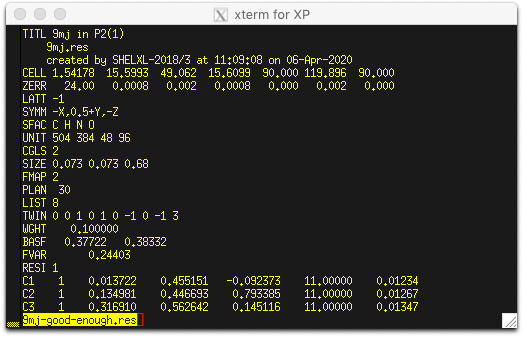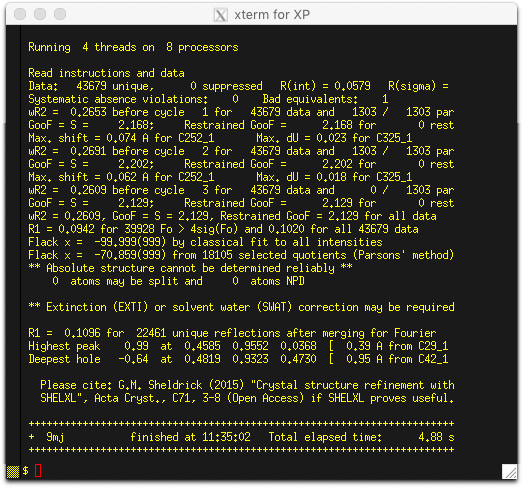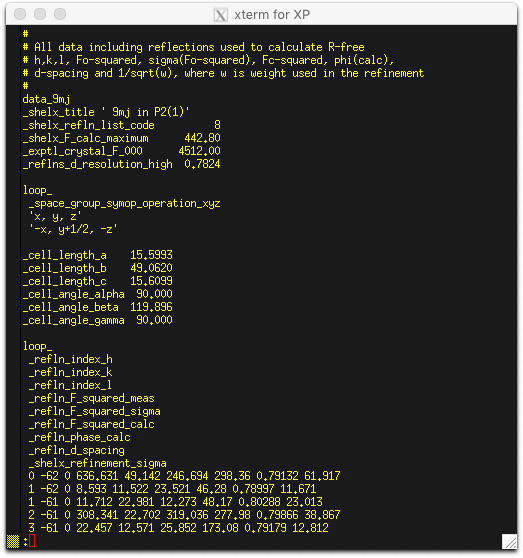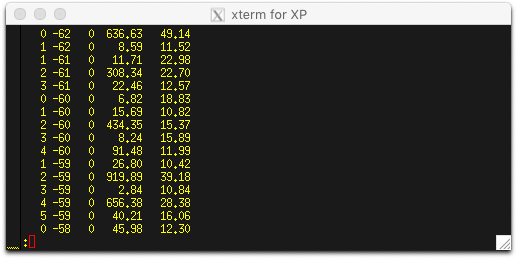
In the above, notice that the TWIN command now specifies three components. A BASF line, with
two fractions for the 2nd and 3rd components is also included. The 'LIST 8' instruction tells
SHELXL to write a detwinned fcf file that includes the following information for each
reflection:
h, k, l, Fo2, σ(Fo2), Fc2, φc, d, σshelx
On running this refinement, the usual SHELXL output statistics show an R-value of about 9% (below). That's not so great, but for this exercise it should be fine.
h, k, l, Fo2, σ(Fo2), Fc2, φc, d, σshelx
On running this refinement, the usual SHELXL output statistics show an R-value of about 9% (below). That's not so great, but for this exercise it should be fine.

The important stuff is in the file 9mj.fcf, the first few lines of which look like this:

The CIF-format junk in the header of this fcf file is useless to us, so remove it using
a text editor. For the diffraction data, we only need the first five fields for each reflection,
formatted as '3I4, 2F8.2' to read into XPREP. The conversion is trivial using a simple
awk one liner ...
... which generates a detwinned hkl file:
awk '{printf "%4d%4d%4d%8.2f%8.2f\n", $1,$2,$3,$4,$5}' 9mj.fcf > 9mj-detwin.hkl
... which generates a detwinned hkl file:

This detwinned dataset is available here:
In part 5, we'll use this detwinned dataset to figure out a strategy to complete the structure.
In part 5, we'll use this detwinned dataset to figure out a strategy to complete the structure.
1: Introduction
2: Set up instructions using XPREP
3: Solve using P21 with SHELXD
4: Detwin using SHELXL
5: Analyze detwinned dataset using XPREP
6: Three-fold twinning in graphic detail
7: Solve using B21 with SHELXD
2: Set up instructions using XPREP
3: Solve using P21 with SHELXD
4: Detwin using SHELXL
5: Analyze detwinned dataset using XPREP
6: Three-fold twinning in graphic detail
7: Solve using B21 with SHELXD